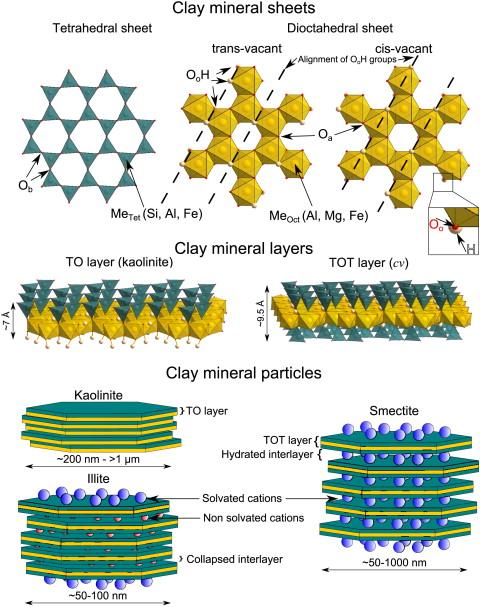NASA scientists have uncovered compelling evidence of clay minerals on Mars dating back to the planet’s earliest history, shedding new light on the Red Planet’s ancient environmental conditions. These findings, revealed through data collected by recent rover missions and orbital observations, suggest that water once played a significant role in shaping Mars’ surface, potentially creating habitats conducive to life. This breakthrough not only deepens our understanding of Mars’ geological past but also fuels ongoing exploration efforts aimed at unraveling the planet’s mysteries.
Discovery of Clay Minerals Sheds Light on Mars’ Early Environmental Conditions
Recent analyses of Martian surface samples have unveiled the presence of ancient clay minerals, providing compelling evidence about the Red Planet’s primordial environment. These minerals, formed through prolonged interactions between water and volcanic rock, suggest that early Mars experienced conditions favorable for sustaining liquid water on its surface. Scientists emphasize that the chemical composition and layering of these clays reveal a history of shifting environmental parameters, potentially indicating a transition from a wetter, more temperate climate to the arid desert we observe today.
Key findings from NASA’s rover missions highlight:
- Detection of iron- and magnesium-rich phyllosilicates, which form in neutral to mildly alkaline waters
- Stratified deposits hinting at ancient lakes or shallow seas
- Evidence for sustained aqueous alteration spanning millions of years
| Clay Mineral Type | Formation Environment | Implications |
|---|---|---|
| Smectite | Neutral pH, abundant water | Potential for habitable conditions |
| Chlorite | Low temperature alteration | Indicators of prolonged water-rock interaction |
| Kaolinite | Acidic weathering | Shifts towards more oxidizing environments |
Implications for Past Water Activity and Potential Habitability on the Red Planet
The discovery of ancient clay minerals offers compelling evidence that Mars once harbored environments conducive to liquid water, a vital ingredient for life as we know it. These hydrated silicates form only in the presence of neutral to mildly alkaline water conditions, suggesting that early Mars may have maintained stable surface water for extended periods rather than the brief, acidic episodes previously inferred. Such conditions could have provided the necessary chemical ingredients and energy sources to support microbial life, expanding our understanding of the planet’s astrobiological potential.
Key implications include:
- Long-term water stability: Indicates lakes, shallow seas, or groundwater existed for thousands to millions of years.
- Habitability window: Suggests a prolonged timeframe during which life might have arisen and thrived.
- Preservation potential: Clay minerals’ ability to trap and protect organic molecules enhances the prospect of detecting biosignatures in future missions.
| Mars Era | Water Activity | Habitability Potential | |||||||||||||||||||||||||||
|---|---|---|---|---|---|---|---|---|---|---|---|---|---|---|---|---|---|---|---|---|---|---|---|---|---|---|---|---|---|
| Noachian (4.1-3.7 Ga) | Persistent, neutral pH water | High | |||||||||||||||||||||||||||
| Hesperian (3.7-3.0 Ga) | Intermittent, acidic flows | Moderate |
| Mars Era | Water Activity | Habitability Potential |
|---|---|---|
| Noachian (4.1-3.7 Ga) | Persistent, neutral pH water | High |
| Hesperian (3.7-3.0 Ga) | Intermittent, acidic flows | Moderate |
| Amazonian (3.0 Ga – present) | Sparse, mainly ice and vapor | Low |
Let me know if you’d like me to format, expand, or modify this content!
NASA’s Recommended Strategies for Future Mars Exploration Missions
To unlock Mars’ deepest secrets, NASA prioritizes a blend of innovative technologies and carefully planned mission architectures that aim to gather high-resolution geologic and mineralogical data. Key to this approach is the deployment of advanced rovers equipped with sophisticated instruments designed to analyze clay minerals in situ. These clays serve as valuable records of the planet’s wetter and potentially habitable environments dating back billions of years. Emphasizing sample return missions, NASA seeks not just remote sensing but direct analysis on Earth, where more comprehensive laboratory techniques can precisely date and characterize Martian materials. This strategy ensures a robust understanding of Mars’ ancient environment and its ability to have supported life.
Additionally, NASA’s roadmap integrates extended surface operations and collaborative international efforts, fostering a multi-disciplinary approach to exploration. Future missions will focus on:
- Localized drilling to investigate subsurface clay layers untouched by radiation.
- Enhanced mobility to explore diverse terrains, including ancient lakebeds and river deltas rich in clay deposits.
- Increased autonomy for rovers to make real-time scientific decisions amid communication delays.
- Sample caching for eventual retrieval by human explorers or advanced robotic fetch missions.
These efforts reflect NASA’s commitment to building a holistic view of Mars’ climate history, setting the stage for future human presence on the Red Planet.
| Strategy | Purpose | Benefit |
|---|---|---|
| In Situ Clay Analysis | Direct mineral identification | Immediate environmental context |
| Sample Return Missions | Bring Martian samples to Earth | Advanced lab testing & dating |
| Autonomous Navigation | Exploration without delays | Efficient terrain coverage |
| International Collaboration | Shared expertise and resources | Broader scientific impact |
In Summary
As NASA’s exploration of Mars continues to peel back the layers of the planet’s deep history, the discovery of ancient clay minerals offers compelling evidence of a wetter and potentially habitable environment billions of years ago. These findings not only enrich our understanding of Mars’ geological past but also guide future missions in the ongoing search for signs of past life beyond Earth. With each new revelation, NASA brings us one step closer to unlocking the mysteries of the Red Planet’s most ancient epochs.
